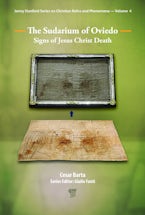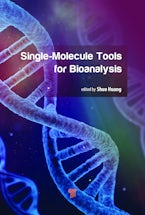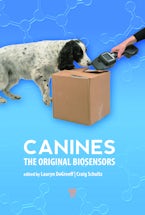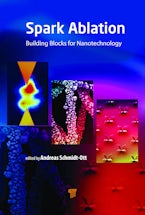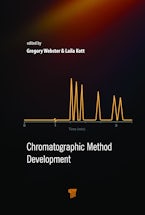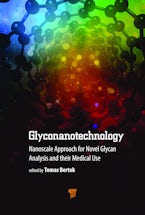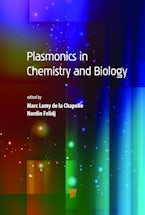But there are also many other things that Jesus did; if every one of them were written down, I suppose that the world itself could not contain the books that would be written. (John 21:24-25)
"This passage from the Gospel of John comes to mind in endeavoring to provide a brief review of the new, large, technical and detailed work on the Shroud of Turin by Professor Giulio Fanti, from the University of Padua, written with the assistance of Pierandrea Malfi. This is one of the books John [Jackson] may have had in mind for publication after hundreds of man-years of collective research even two thousand years after the death of Jesus. This book is unique and timely. It is being published at the time of the 2015 public exhibition of the Shroud in Turin, Italy, and it is unique in the depth of material covered that supports dating the Shroud progressively back to the first century. The book includes an intriguing chapter on a numismatic investigation that strongly supports the conclusion that the Shroud existed as an archetype for coins minted in the seventh century AD, well before the 1988 carbon dating that declared the Shroud linen cloth dated from 1260 to 1390. Even more important are chapters that cover alternative dating methods for ancient linen that appear to strongly support a first century provenance for the Shroud linen. A detailed critique of the 1988 carbon dating effort is also included that gives the authors’ analysis of why and how the effort failed to correctly ascertain the true age of the Shroud. Other topics touched on in the book include Shroud history, medical forensics related to the suffering of the Man of the Shroud, detailed image characteristics, and image formation hypotheses.
"Overall this volume will be a valuable resource book for the general public as well as for Shroud scholars for many years to come. It is an outstanding contribution to Shroud studies."
~Robert W. Siefker, The Turin Shroud Center of Colorado, USA
"Prof. Giulio Fanti of the University of Padua, Italy, is recognized internationally as one of the leading researchers on the Shroud of Turin. He is the founder of the Shroud Science Group, which brings together researchers from all parts of the world to exchange ideas and correspondence on the Shroud.
"Prof. Fanti’s new book, The Shroud of Turin: First Century after Christ!, is a major new work in the field of literature on the Shroud. In addition to summarizing the results of previous studies on the Shroud, it details new scientific methods for dating the Shroud that have been developed by Prof. Fanti and his co-researchers, and gives their results. The book contains much scientific and technical detail on research that has been carried out on the Shroud, but also provides useful summaries for the less technical reader.
"The book includes a detailed physical description of the Shroud, which clearly demonstrates that the Shroud is not a painting of any sort. Prof. Fanti states clearly that the manner of the formation of the image of the Shroud remains a mystery, but he puts forward his own hypothesis, based on the research he has carried out, as to how the image may possibly have been formed.
"Other major aspects of the book include
• a detailed investigation of evidence that gold coins issued during the Byzantine period carry depictions of Christ based on the image of the Man on the Shroud.
• a detailed criticism of the radio-carbon dating tests of 1988 which purported to show that the Shroud is of medieval origin. Prof. Fanti refutes the results of these tests on the basis of probable sample contamination, statistical unreliability, and the nonrepresentative nature of the samples taken and used for the tests.
• the requirement for new, alternative dating methods, and a detailed description of two chemical vibrational spectroscopy methods and a mechanical method, developed by Prof. Fanti and his colleagues, which provide dating results consistent with each other and significantly different to those obtained by the radio-carbon dating of 1988.
"Prof. Fanti’s book is of great value as it provides a useful summary of what is already known about the Shroud, together with details and results of very interesting new research for which he has been responsible. It is an essential addition to any library or collection of written work on the Shroud of Turin."
~Mark Oxley, Author of The Challenge of the Shroud
"After decades of dedicated research, Dr. Fanti and his colleagues have developed a new scientific method to date ancient linen, whose result is consistent with the extensive scientific and medical evidence derived from the unique Shroud of Turin. Fanti’s result is also completely different from the Shroud’s medieval C-14 dating, constituting the first direct scientific challenge to the dating of this famous cloth. If this burial cloth was irradiated by neutrons, the accuracy of Dr. Fanti’s dating method would not be affected; however, no C-14 date from the Shroud would be accurate if this event occurred."
~Mark Antonacci, Author of The Resurrection of the Shroud, Test The Shroud Foundation
"This book first gives an overview of the Shroud of Turin and its history. The chapter on numismatic investigation is very interesting because it links the image of the face of Jesus Christ on the coins of the Byzantine Empire as of the seventh century to the image of Jesus Christ on the Shroud of Turin and gives a very clear indication that the Shroud existed before the period between 1260 and 1390 AD, established by the radiocarbon dating tests, and that the sample used for the radiocarbon dating in 1988 was not representative of the whole Shroud.
"Fanti and his co-author continue with an excellent description of the technique of radiocarbon dating and take it one step further by proposing and executing three alternative dating methods. The research project included two chemical methods based on spectrometry, Raman and Fourier transform infrared (FTIR), and also an multiparametric mechanical test, combined together by an arithmetic mean, and they dated the Shroud fibers back to 33 BC, with about 250 years’ uncertainty and within a 95% confidence level, again contradicting the result of the radiocarbon dating of 1988. The interesting fact is that the only period matching with all the three different dating methods used is exactly the first century AD, and that is of course the period in which Jesus Christ lived.
"The chapter where the authors describe the new investigations on the vacuumed dusts from the interspace between the original linen cloth of the Shroud and the backing Holland cloth by the research group at the University of Padua is also of great interest and gives a lot of new information.
"The book is highly recommended because it contains a lot of very professional explanations of the techniques used and, of course, because of the results of the different dating techniques that show that the samples taken of the Shroud in 1988 to do the radiocarbon dating were not representative of the whole Shroud."
~Petrus Soons, Shroud Researcher from Panama
"In this book Professor Fanti of the University of Padua discusses issues concerning the Shroud by applying the same criteria that are used for scientific research. Experimental work is Fanti’s most specific merit. He might be the ‘Sindonologist’ who has performed more physical tests than others. This book gathers not only a review of the different theoretical discussions concerning the Shroud, but also the results of these many practical tests performed.
"In particular, Fanti, for first time, experimentally proves that the threads of the Shroud can be 2000 years old. His academic expertise allowed him to perform the dating based on the mechanical properties of linen fibers. His method was further confirmed by the molecular vibration method (Raman and FTIR) driven by him. These new techniques gave a solid argument against the radiocarbon dating.
"The review of many hypotheses for the image formation includes his experimental test for the ‘corona discharge’ effect. He analyzes why they fail to give a whole image explanation. His colleague Conca also compiles a very interesting review of the Shroud samples’ origin and whereabouts. In particular, he provides documentation about the controversy between the Turin Church and Fanti with regard to some of these samples. This book is a good opportunity to be updated on the knowledge of the Holy Shroud."
~Cèsar Barta, Centro Español de Sindonologia, Spain


